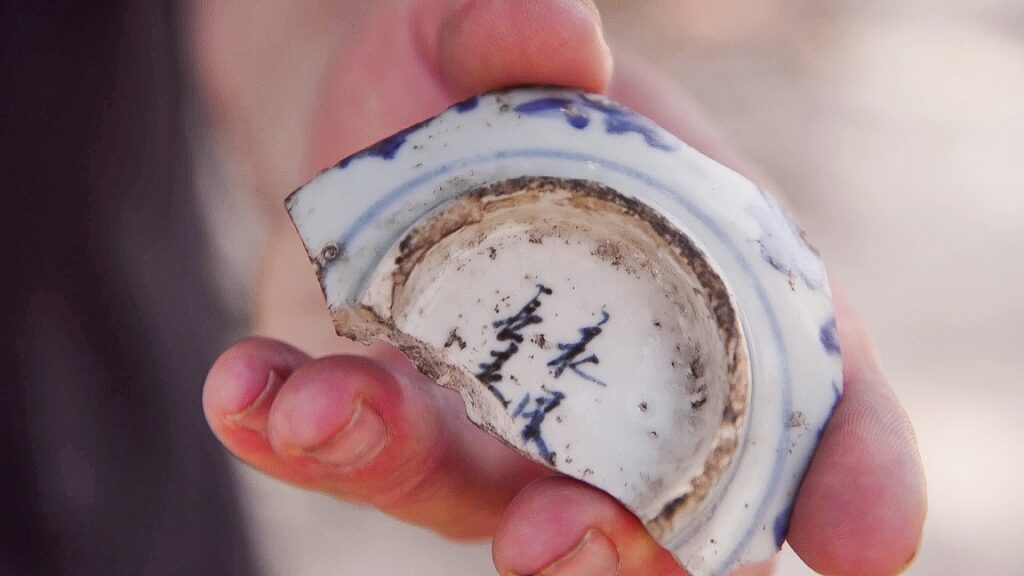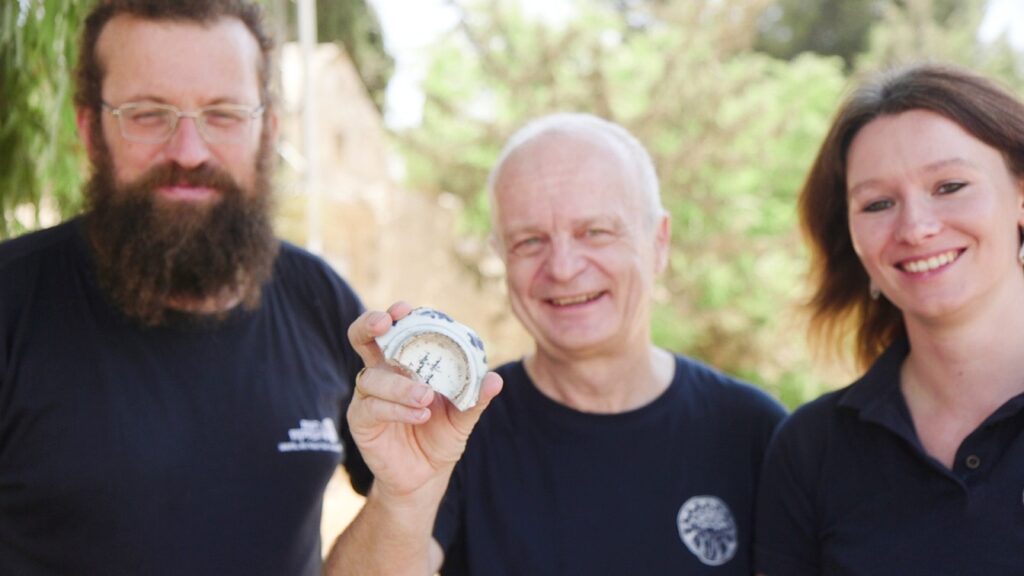
Archaeologists discovered a 500-year-old Chinese inscription on Mount Zion in Jerusalem
Archaeologists have discovered a 500-year-old Chinese inscription on a piece of blue-and-white porcelain found on Mount Zion, representing the oldest known Chinese writing found in Israel.
The inscription states, “Forever we will protect the eternal spring,” and was uncovered during a three-year collaborative excavation conducted by the Israeli Antiquities Authority (IAA) and the German Protestant Institute of Archaeology. The discovery was made this summer by Israeli archaeologist Michael Chernin.
As per the press release from the Israel Antiquities Authority, “the bowl dates back to 1520-1570 and is from the Ming Dynasty.”

According to Israel Antiquities Authority Director Eli Escusido, “In archaeological research, evidence of trade relations between merchants in the Land of Israel and the Far East is known even from earlier periods – for example, of various spices. But it is fascinating to meet evidence of these relations also in the form of an actual inscription, written in the Chinese language, and in an unexpected place – on Mount Zion in Jerusalem”
📣 Our WhatsApp channel is now LIVE! Stay up-to-date with the latest news and updates, just click here to follow us on WhatsApp and never miss a thing!!
It is believed that the bowl made its way to Jerusalem during the early years of Ottoman rule, which spanned from the 16th to the 20th century.

The IAA explained that “according to Ming Dynasty records, approximately 20 official Ottoman delegations visited the imperial court in Beijing between the 15th and 17th centuries,” providing insight into how the bowl may have reached the area.
Additionally, the writings of the Chinese scholar Ma Li from 1541 reference colonies of Chinese merchants in Lebanese coastal cities like Beirut and Tripoli. His work also mentions other significant cities in the region, including Jerusalem, Cairo, and Aleppo.
Cover Photo: Israel Antiquities Authority
You may also like
- A 1700-year-old statue of Pan unearthed during the excavations at Polyeuktos in İstanbul
- The granary was found in the ancient city of Sebaste, founded by the first Roman emperor Augustus
- Donalar Kale Kapı Rock Tomb or Donalar Rock Tomb
- Theater emerges as works continue in ancient city of Perinthos
- Urartian King Argishti’s bronze shield revealed the name of an unknown country
- The religious center of Lycia, the ancient city of Letoon
- Who were the Luwians?
- A new study brings a fresh perspective on the Anatolian origin of the Indo-European languages
- Perhaps the oldest thermal treatment center in the world, which has been in continuous use for 2000 years -Basilica Therma Roman Bath or King’s Daughter-
- The largest synagogue of the ancient world, located in the ancient city of Sardis, is being restored











Leave a Reply